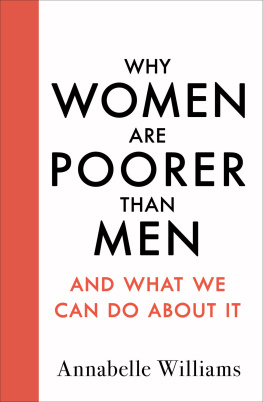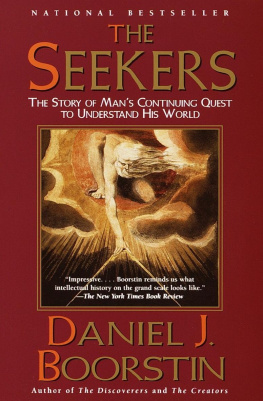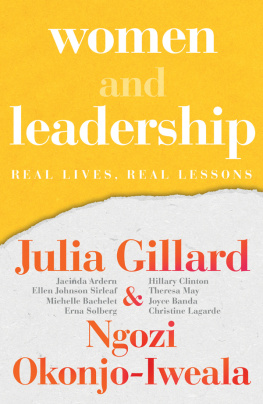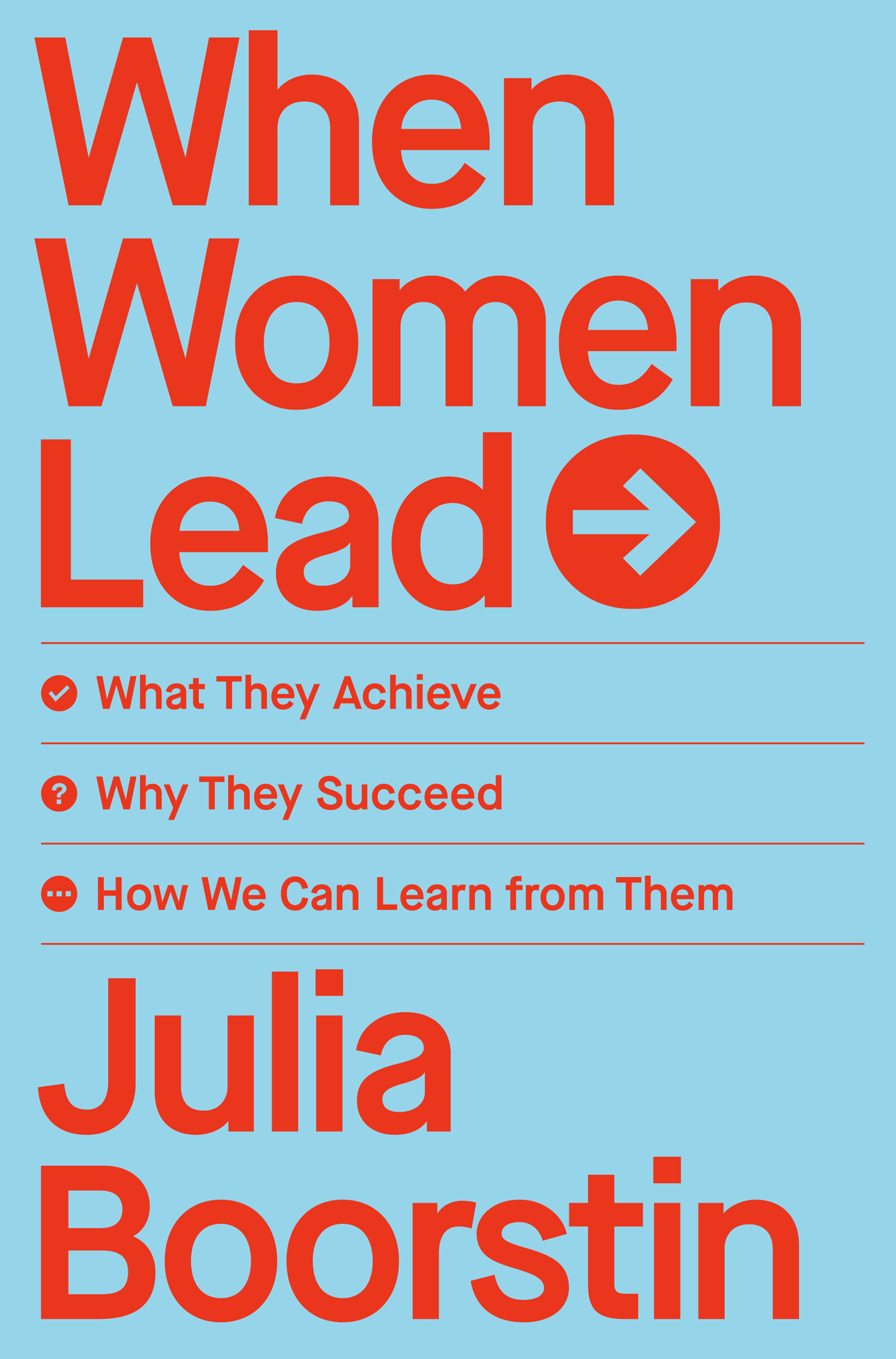
Contents
Guide
When Women Lead
What They Achieve
Why They Succeed
How We Can Learn from Them
Julia Boorstin
To my parents, Paul and Sharon, who inspire me to pursue hard things and instilled in me a love of asking questions.
And to my husband and partner, Couper, whose patience and co-parenting made this book possible.

Introduction
When you grow up, everything will be different.
I still remember my mother saying that when I was thirteen years old, squeezed between friends in the back seat of afternoon carpool. We had just heard Gloria Steinem speak at our schools annual womens history speaker series. It was an experience my mother saw as a rite of passage for me. She had marched against the Vietnam War and for civil rights, and proof of it sat on her desk: a photo of her younger self in a flower print minidress, flanked by her best friends holding picket signs. Drawn to the energy and potential in the womens rights movement, she had heard Steinem speak in the 1970s.
We marched so you wouldnt have to, she said. My parents told me my only two choices were teacher and nurse. (She chose teacher.) But now, she said, in this last decade of the millennium, opportunities would be unfolding before us. You will be captains of industry! Women will be running companies! The halls of Congress will be full of women! I rolled my eyes and looked out the window. Given the steady march toward progress, my moms enthusiasm felt pointless and even embarrassing. CEO! Rocket scientist! Brain surgeon! Nothing will hold you back! she continued. Of course, Mom. I know.
Eight years later, on the sixteenth floor of the Time Warner building in midtown Manhattan, I realized we had both been wrong.
It was my first day working at Fortune magazine. I was one of the last people hired before the stock market crash of 2000. A twenty-one-year-old Princeton graduate with a degree in history, I didnt have a single economics or accounting class on my transcript, but I had been an editor at The Daily Princetonian, and I came armed with writing samples from a class Id taken with John McPhee. I also had done an assortment of internships at the White House and for the State Departments delegation to the Organization for Economic Co-operation and Development (OECD). I guess my new bosses figured I could learn how to analyze numbers, read SEC documents, and examine financial results. It was an assumption that was both refreshing (no outmoded stereotypes about girls and math here!) and also a little daunting (whats an S-1 again?).
That morning, a supervisor invited me into her office for an informal orientation, mainly to review corporate policies on expense accounts and explain the guidelines for pitching stories. Oh, and your timing is so lucky, she added as we were wrapping up. There was just a big sexual harassment settlement at Time Inc., so everyoneshe waved to the corridor of male editorswill be on their best behavior.
I was stunned. That was 2000long before the #MeToo era and broad recognition that the combination of lopsided workplace power dynamics and anything sexual could be toxic. Even the Monica Lewinsky scandal, which had broken into public view during my White House internship, had been viewed by many people (me included) as more a tawdry sex scandal than abusive workplace behavior. My reporter instincts had me itching to ask questions about the settlement, but they were questions I suddenly didnt feel comfortable asking. What kind of sexual harassment? What does big settlement even mean? Was it a victory that the men in this office would be slightly more nervous aboutabout doing what, exactly?
As I walked out of her office, past the warren of dark reporter cubbyholes, I saw the true male/female 50/50 split that Id been accustomed to in high school and college. As I turned the corner to the row of midcareer writers, the men outnumbered the women, but not by much. Then I got to the rows of senior editors offices. There was one belonging to the legendary female editor-at-large Carol Loomis. But the vast majority of senior editors were men. I considered the power ratio.
Later, when I asked an older female writer about the sexual harassment situation, she gave me no details. Instead, she advised me to follow a Men-minus-two rule: stay two drinks behind the male editors at postwork happy hours. Never accuse anyone of sexual harassment, she warned. Unless youre guaranteed to make enough money from the settlement that youll never have to work again. To her it was an obvious statement of factthat kind of accusation would make one unhirable. She was just being practical. But for me, it was a giant crack in the monolithic wall of confidence that my mother had built for me about my opportunities in an equitable world.
That was just the beginning. A few months later, during one interview, a mutual fund manager scoffed when I pressed him on his declining returns: How could such a young woman like me possibly have any informed questions about the subject? On another occasion, when Oracle CEO Larry Ellison and his senior executive team swept into the conference room for a cover story I was helping report, they asked me to get them coffee, assuming that I was a secretary. When I reported a story about twenty CEOs whose net worth had declined by more than $1 billion during the stock market downturnall of them happened to be menI received angry phone calls and emails from a number of them, questioning my math and accusing me of not understanding their businesses. The rule, rather than the exception, was for men to either sneer at or leer at young women like me.
While doing interviews with CEOs, analysts, and fund managers, I learned to expect a low simmer of condescension. I protected myself by donning an armor of boxy suits and chunky glasses (which I didnt really need). I decided I would be taken more seriously if I never discussed my personal life. I tried to minimize my natural girliness and turned myself into a financial reporting utility, studying S-1 IPO filings, annual reports, and analyst notes. I created a work identity: overprepared and calm. When an inappropriate comment made its way to me, I kept a guarded, neutral half smile on my face. Unlike my male peers, I didnt linger at after-work happy hours (I always stayed Men-minus-two). That workplace identity wasnt really me, but it worked for me.
One morning in 2003, my colleague Grainger David slumped into the chair next to my desk. Every day we traded professional strategies and intraoffice gossip, and hed come to report on the tennis game hed played with two senior editors the night before. If I were to run a gender workplace experiment, David would have made a perfect control set. He and I had graduated from Princeton together and started working at Fortune magazine within a few weeks of each other. Our academic backgrounds were remarkably similar (although he, unlike me, had taken Econ 101).
The tennis game, David told me, had led to cocktails and then to a larger discussion about his dream of covering the gold rushthe one in Mongolia. Sending a reporter and photographer abroad, especially somewhere like Mongolia, was an expensive investment for an atypical







 Contents
Contents
